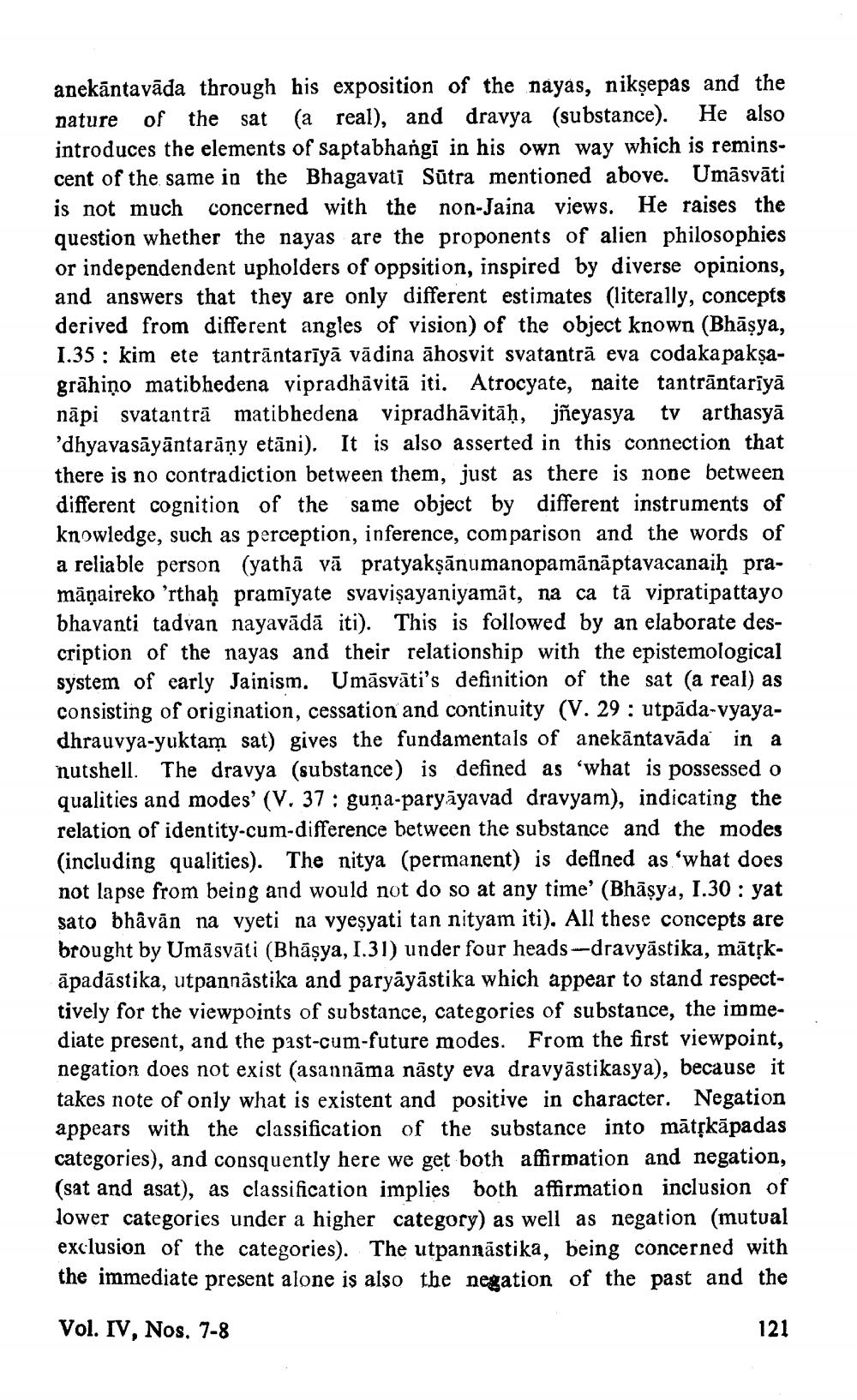________________
anekāntavāda through his exposition of the nayas, nikṣepas and the nature of the sat (a real), and dravya (substance). He also introduces the elements of saptabhangi in his own way which is reminscent of the same in the Bhagavati Sūtra mentioned above. Umāsvāti is not much concerned with the non-Jaina views. He raises the question whether the nayas are the proponents of alien philosophies or independendent upholders of oppsition, inspired by diverse opinions, and answers that they are only different estimates (literally, concepts derived from different angles of vision) of the object known (Bhāşya, 1.35: kim ete tantrāntarīyā vādina āhosvit svatantrā eva codakapaksagrāhiņo matibhedena vipradhävitā iti. Atrocyate, naite tantrāntarīyā nāpi svatantrā matibhedena vipradhāvitāḥ, jñeyasya tv arthasyā 'dhyavasāyāntarāny etāni). It is also asserted in this connection that there is no contradiction between them, just as there is none between different cognition of the same object by different instruments of knowledge, such as perception, inference, comparison and the words of a reliable person (yathā vā pratyakṣānumanopamānāptavacanaiḥ pramāņaireko ’rthaḥ pramiyate svavişayaniyamāt, na ca tā vipratipattayo bhavanti tadvan nayavādā iti). This is followed by an elaborate description of the nayas and their relationship with the epistemological system of early Jainism. Umāsvāti's definition of the sat (a real) as consisting of origination, cessation and continuity (V. 29 : utpāda-vyayadhrauvya-yuktam sat) gives the fundamentals of anekāntavāda in a nutshell. The dravya (substance) is defined as 'what is possessed o qualities and modes' (V. 37 : guņa-paryāyavad dravyam), indicating the relation of identity-cum-difference between the substance and the modes (including qualities). The nitya (permanent) is defined as 'what does not lapse from being and would not do so at any time' (Bhāșya, 1.30 : yat sato bhāvān na vyeti na vyeşyati tan nityam iti). All these concepts are brought by Umāsvāti (Bhāșya, I.31) under four heads-dravyāstika, mātrkāpadāstika, utpannästika and paryāyāstika which appear to stand respecttively for the viewpoints of substance, categories of substance, the immediate present, and the past-cum-future modes. From the first viewpoint, negation does not exist (asannāma nāsty eva dravyāstikasya), because it takes note of only what is existent and positive in character. Negation appears with the classification of the substance into mātskāpadas categories), and consquently here we get both affirmation and negation, (sat and asat), as classification implies both affirmation inclusion of lower categories under a higher category) as well as negation (mutual exclusion of the categories). The utpannāstika, being concerned with the immediate present alone is also the negation of the past and the
Vol. IV, Nos. 7-8
121




